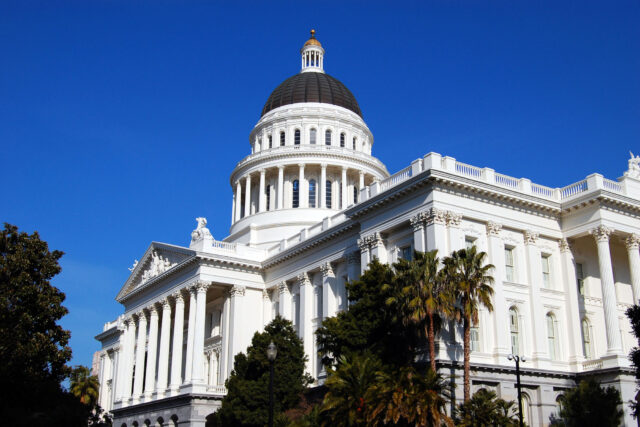This is the final day of California’s COVID-19 state of emergency—an official declaration that has been in place since March 2020. As state leaders took steps to mitigate the spread of the virus, they also had to deal with COVID’s economic impact. Looking back over the past three years, how did the economic challenges of the pandemic—and the state’s response—evolve? And what are Californians’ economic circumstances today?
At the beginning of the pandemic, the PPIC Statewide Survey found that Californians were very worried about both their health and their economic well-being. Notably, Latinos and Californians with incomes under $40,000 were especially worried—a trend that would continue throughout the pandemic. How did Californians feel about the state’s response? In May 2020, strong majorities approved of Governor Newsom’s handling of both the coronavirus outbreak (69%) and jobs and the economy (59%). Approval in both areas declined over the first year of the pandemic—and partisan differences were dramatic—but it did not dip below 50% in surveys through February 2022.
Throughout the pandemic, there have been dramatic swings in economic optimism. The share of Californians who expected bad economic times skyrocketed from 43% in January 2020 to 79% in April 2020. After rebounding in 2021, economic optimism dwindled in 2022, and our February 2023 survey found that 66% are expecting bad economic times.
It made sense that so many were pessimistic in spring 2020, given what happened in California’s job market: 2.8 million jobs were lost in the first two months (a 16% decline). Unlike other recent recessions, however, jobs began to bounce back quickly. By October 2022, 2.8 million jobs had been gained. But these gains were not necessarily made in the sectors or occupations that experienced the greatest losses.
The sectors that remain farthest behind their pre-pandemic levels are accommodations and food service, arts and entertainment, and other services. These sectors are still growing slowly, but the pandemic’s impact may be long term, given lagging demand for some services and increased demand for more flexible working conditions. Government, retail trade, and manufacturing—large sectors of the California economy—are also slightly below pre-pandemic levels (as are subsectors like child care and nursing care).
On the other side of the spectrum, the surge in demand for goods during the pandemic remains evident in the transportation and warehousing sector, where jobs are up 16%. As of December, jobs in health care and professional and scientific services were also the most elevated above pre-pandemic levels.
Even as unemployment numbers peaked at 3 million, Californians were buoyed by federal and state support. About $100 billion in unemployment insurance, federal stimulus payments, California’s Golden State stimulus, and the expanded Child Tax Credit all had a stabilizing effect on household resources and helped many avert poverty. In May 2020, 30% of Californians said they were financially worse off—a much lower share than the 53% who reported being worse off during the Great Recession. By November 2021, only 18% reported being worse off—but lower-income Californians were still more likely to say they were negatively affected (29% less than $40,000, 18% $40, 000 to under $80,000, 13% $80,000 or more).
Labor market conditions have improved for workers, but wages have not kept up with inflation, leaving many Californians concerned about their current finances and the economic outlook. In November 2022, about three in ten (29%) said that their personal finances had worsened over the past year—a share that was nearly identical early in the pandemic. Costs are a major concern: in February 2023, 61% reported financial hardship due to rising prices and 45% were concerned about paying for housing.
Looking back at California’s three-year state of emergency on COVID-19, we can see dramatic swings in economic conditions. While job loss at the beginning of the crisis was off-the-charts severe, many sectors rebounded quickly. And, while government support and wage gains benefited many Californians, increased prices and cost of living have left many pessimistic about our economic future. Now that the state’s fiscal challenges are also on the rise, policymakers face critical decisions as they chart a path toward economic vitality and opportunity for all.






